Text
Shōwa Day (昭和の日, Shōwa no Hi)
It's the start of the Golden Week period here in Japan today - a series of holidays that run from the end of April until Children's Day on 5 May. Today is also a national holiday - Shōwa Day (昭和の日,
Shōwa no Hi), an annual day of rest established in 2007 to reflect on the events of the turbulent Shōwa period. As the birthday of Emperor Hirohito, officially known as Emperor Shōwa, 29 April was originally celebrated as a different holiday during his lifetime.
Hirohito was born on this day in 1901. After his death in 1989, the date continued to be a holiday under the new name "Greenery Day" (みどりの日, Midori no hi), because of the late emperor's love of biology and inters test in environmental issues. In 2007, Greenery Day was moved to 4 May, and 29 April took the name "Shōwa Day" in honour of the late Emperor. As such, Shōwa Day marks the start of the Golden Week holiday period.
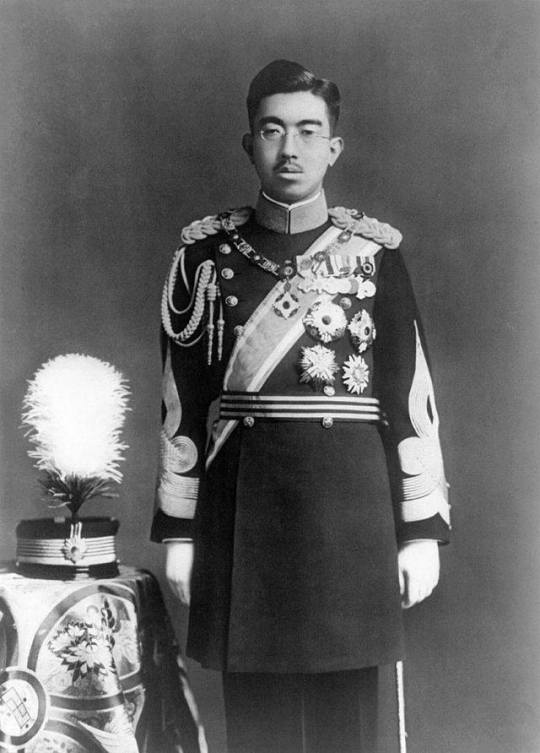
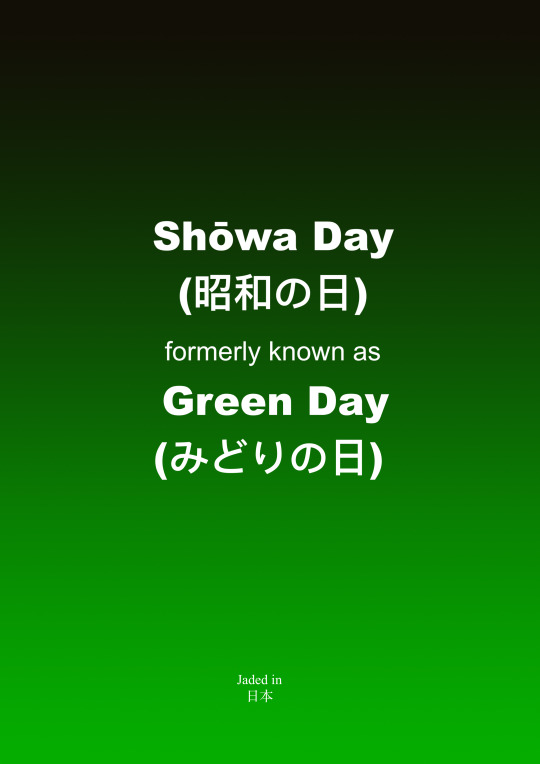
#Shōwa Day (昭和の日 Shōwa no Hi)#Emperor#Showa#Hirohito#Greenery Day (みどりの日)#29 April#national holiday#Golden Week#Japan#jadedinjapanworld
4 notes
·
View notes
Text
Japanese painter Saeki Yūzō (佐伯 祐三, 28 April, 1898 – 16 August, 1928)
Born in Osaka on this day in 1898, Saeki Yūzō (佐伯 祐三, 28 April, 1898 – 16 August, 1928), a Japanese painter, noted for his work in developing modernism and Fauvist Expressionism within the yōga (Western-style) art movement in early 20th century Japan.
Here are some examples of his artwork.

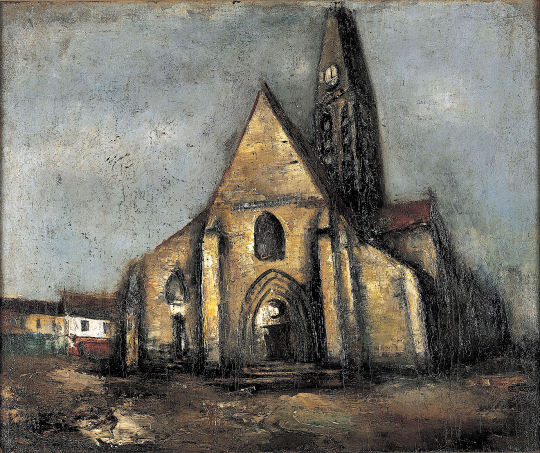

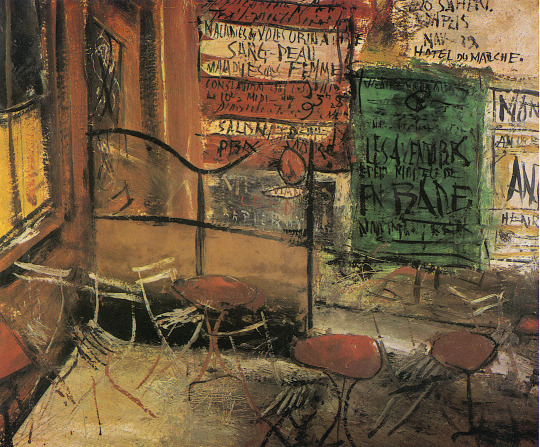
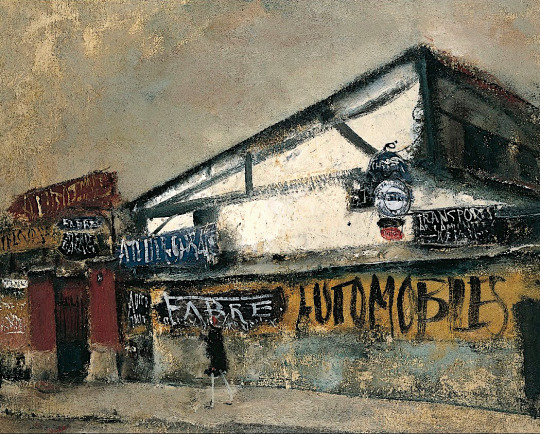
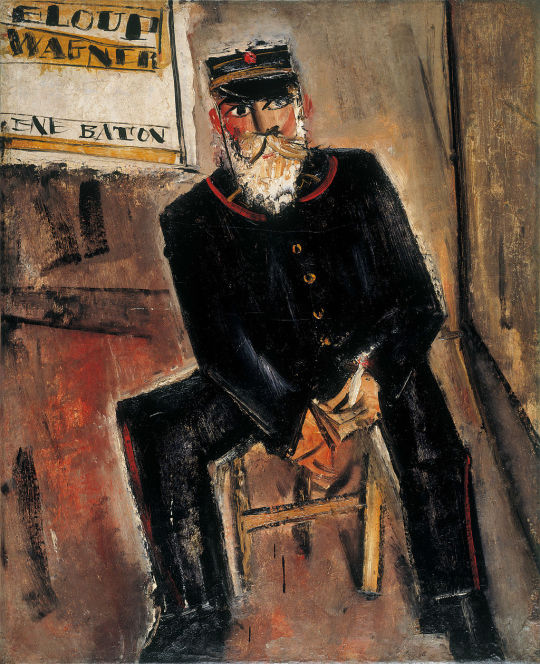
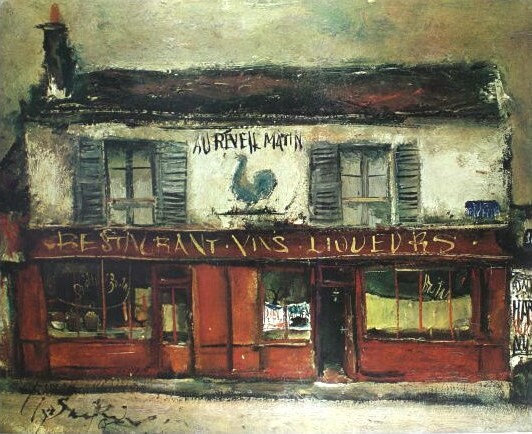
#Saeki Yūzō (佐伯 祐三 28 April 1898 – 16 Aug 1928)#Japan#Japanese art#Japanese painter#Japanese painting#Modernism#Fauvist Expressionism#Osaka
13 notes
·
View notes
Text
"Sankei-en Wisteria" (三渓園の藤), 2011, by Morimura Rei/Ray (森村 玲), a Tokyo based woodblock artist, born (in Tokyo) in 1948.
Sankei-en (三溪園; literally, the "Three Creeks Garden") is a traditional Japanese-style garden in Naka Ward, Yokohama, Japan, which opened in 1906Sankei-en was designed and built by Tomitaro Hara (原富太郎, 1868–1939), known by the pseudonym Sankei Hara, who was an affluent silk trader from Saitama Prefecture. Almost all of its buildings in the garden are historically significant structures bought by Hara himself in locations all over the country, among them Tokyo, Kyoto, Kamakura, Gifu Prefecture, and Wakayama Prefecture. Ten have been declared Important Cultural Property, and three more are Tangible Cultural Properties of Japan designated by the City of Yokohama.Badly damaged during World War II, the garden was donated in 1953 to the City of Yokohama, which entrusted it to the Sankeien Hoshōkai Foundation (三溪園保勝会, Sankeien Hoshōkai). Sankei-en was then restored almost to its pre-war condition.
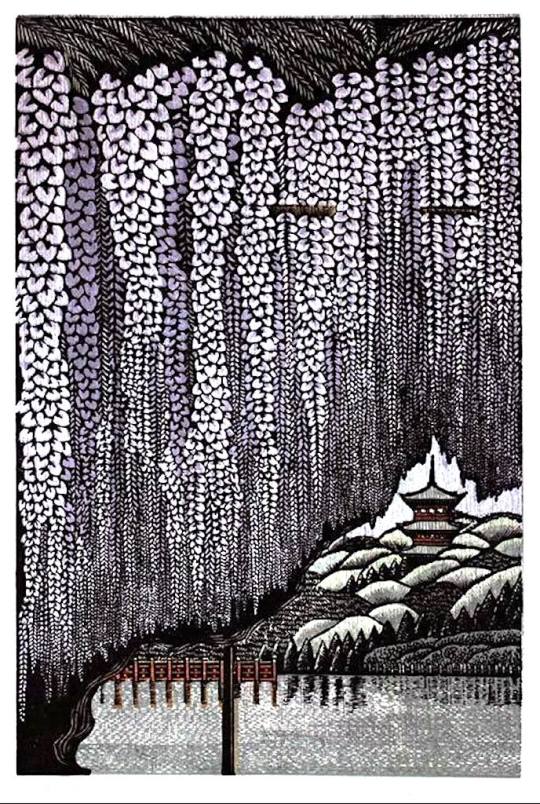
#Sankei-en (三溪園; literally the Three Creeks Garden)#Wisteria (藤の花)#Morimura Rei/Ray (born 1948)#Japanese art#Japanese woodblock printmaking#Japan#jadedinjapanworld#Tokyo#Yokohama#Tara Tomitaro (1868-1939)
6 notes
·
View notes
Text
26 April, 1969 - the death of Aikido founder Ueshiba Morihei (植芝 盛平, 14 December, 1883 – 26 April, 1969)
Remembering Aikido founder Ueshiba Morihei (植芝 盛平, 14 December, 1883 – 26 April, 1969) who passed away from liver cancer on this day in 1969 at the age of 85. https://youtu.be/XoDK3XuvZWw
He appears here in front of a self-portrait of himself as the Dragon King, representing the unification of motion and stillness!
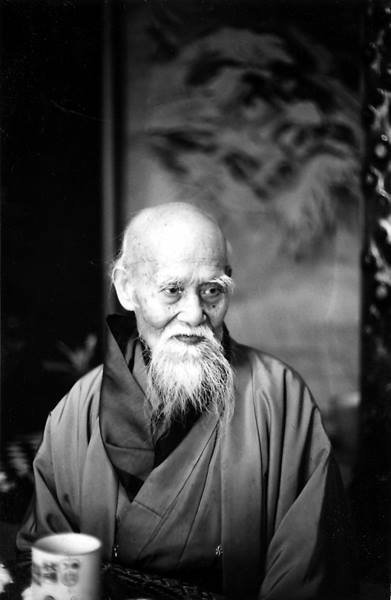
#Aikido founder Ueshiba Morihei (植芝 盛平 14 December 1883 – 26 April 1969)#Aikido#Japanese martial arts#Japan#jadedinjapanworld#1969
6 notes
·
View notes
Text
26 April, 1954 - Seven Samurai (七人の侍)
Released by Toho Company, Ltd., on this day in 1954, Akira Kurosawa's classiic period drama/jidaigeki "Seven Samurai" (七人の侍)! https://youtu.be/7mw6LyyoeGE
The story takes place in 1586 during the Sengoku period (戦国時代) also known as the "Age of Warring States"; ca. 1467 – ca. 1603). It follows the exploits of a village of farmers that hire seven ronin (masterless samurai) to combat bandits who will return after the harvest to steal their crops.
Since its release, "Seven Samurai" has consistently ranked highly in critics' lists of the greatest films of all time. It has also remained highly influential, often seen as one of the most remade, reworked, referenced films in cinematic history.
A technical and creative watershed that became Japan's highest-grossing film and set a new standard for the industry, its influence can be most strongly felt in the western "The Magnificent Seven" (1960), a film specifically adapted from "Seven Samurai." Director John Sturges took "Seven Samurai" and adapted it to the Old West, with the samurai replaced by gunslingers. Many of "The Magnificent Seven's" scenes mirror those of "Seven Samurai."
Films by the likes of George Lucas ("Stars Wars") and Quentin Tarantino ("Kill Bill") were similarly heavily influenced by "Seven Samurai" and other films by Akira Kurosawa.

#Seven Samurai (七人の侍)#1954#Japanese film#Japan#Japanese cinema#jadedinjapanworld#Mifune Toshirō (三船 敏郎 1 April 1920 – 24 December 1997)#Kurosawa Akira (黒澤明; 23 March 1910 – 6 September 1998)#Toho Company Ltd.
0 notes
Text
"A Postcard Mt. Fuji" (a 2014 woodblock print with gold leaf; dimensions (h x w): 12.5 x 8.75 inches, edition size: 50) by Tamekane Yoshikatsu (爲金義勝), a contemporary Japanese abstract artist who was born in Hyōgo Prefecture (兵庫県) in 1959.
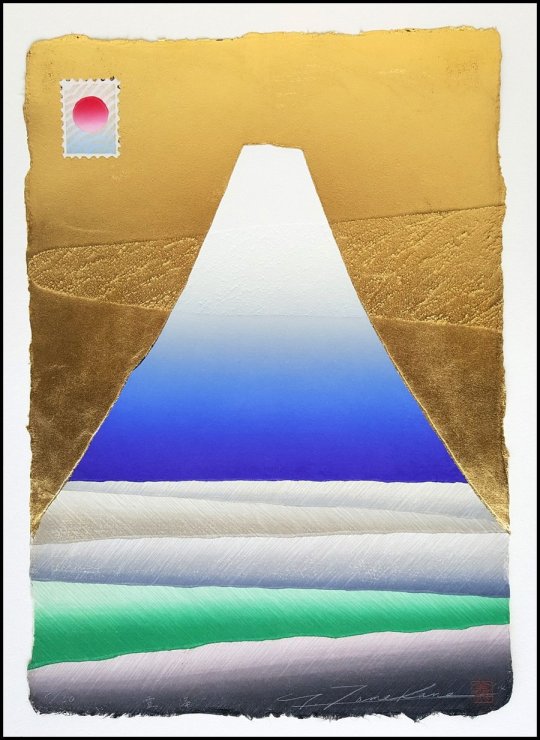
#Tamekane Yoshikatsu (爲金義勝) born 1959)#A Postcard Mt. Fuji#Japan#Japanese art#japanese artist#jadedinjapanworld#woodblock print
6 notes
·
View notes
Text
Japanese painter Matsumoto Shunsuke (松本 竣介, 19 April, 1912 – 8 June, 1948)
19 April, 1912
Born as Shunsuke Satō (佐藤俊介) in Shibuya, Tokyo on this day in 1912, Matsumoto Shunsuke (松本 竣介, 19 April, 1912 – 8 June, 1948), a Japanese painter who painted primarily in the Yōga (洋画) or Western painting style.
He spent his childhood and youth in northern Honshu, first in Hanamaki, Iwate, and later in Morioka, where he began attending middle school in 1925. The future sculptor Funakoshi Yasutake (舟越 保武, 1912 – 2002) was among his schoolmates and in the same grade. Matsumoto contracted cerebrospinal meningitis which caused the loss of his hearing. Subsequently he developed an interest in becoming a painter, and left Morioka for Tokyo in 1929.
In Tokyo, Matsumoto took classes at the Taiheiyō Gakai Institute (太平洋画会研究所) and became friends with Aso Saburo (麻生三郎) and Terada Masaaki (寺田政明). In 1935, he exhibited some of his works at the Fifth Nova Exhibition, and his work "Buildings" was accepted for the 22nd Nika Exhibition. He went on presenting his work at the Nika Exhibitions until 1943.
Matsumoto died at the age of 36 on 8 June, 1948 from heart failure aggravated by tuberculosis and bronchial asthma.
Here are some intriguing examples of his artwork.

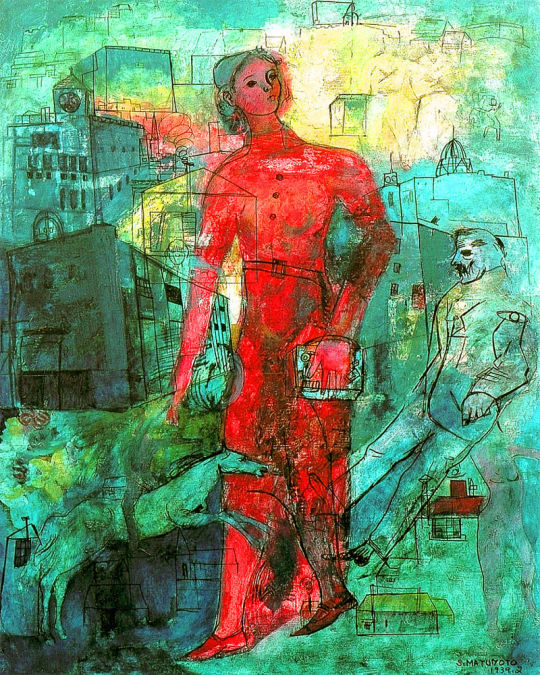
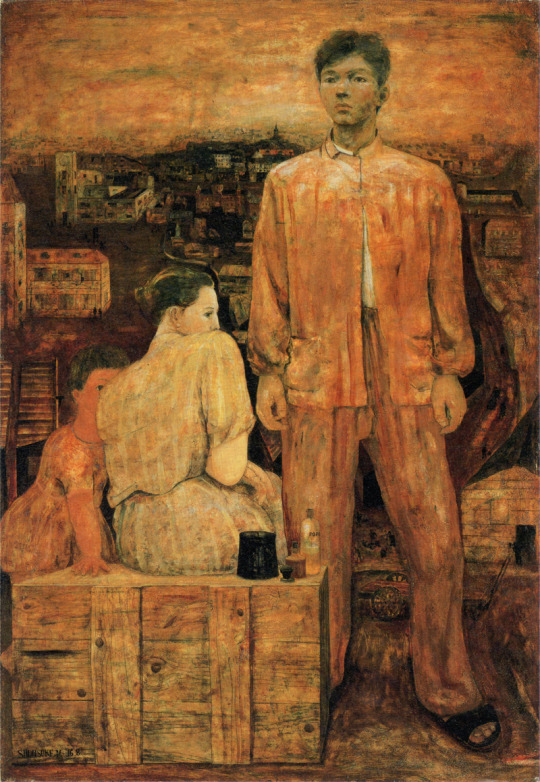
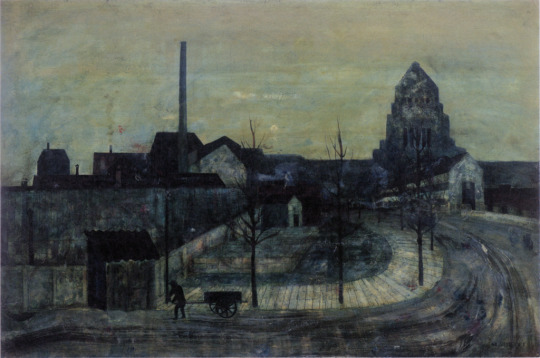
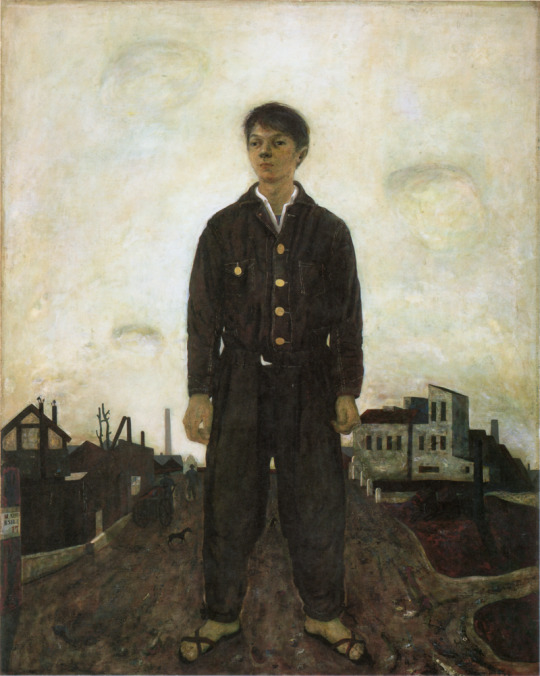
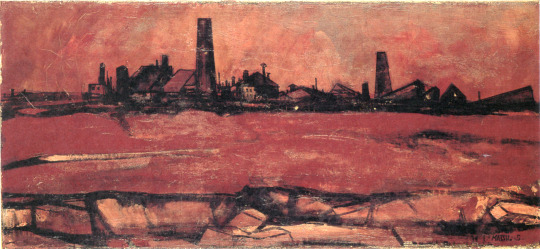
#Matsumoto Shunsuke (松本 竣介 19 April 1912 – 8 June 1948)#Japanese art#Japanese painter#Japan#jadedinjapanworld#Tokyo
3 notes
·
View notes
Text
Tsukioka Kōgyo (月岡 耕漁, 18 April, 1869 – 25 February, 1927),
8 April, 1869
Born in Tokyo, Japan, on this day in 1869, Tsukioka Kōgyo (月岡 耕漁, 18 April, 1869 – 25 February, 1927), sometimes called Sakamaki Kōgyo (坂巻 耕漁), the pre-eminent graphic artist of the nōh and kyōgen theatre traditions in the Meiji period.
Tsukioka Kōgyo was a student and the adopted son of Tsukioka Yoshitoshi (月岡 芳年); also named Taiso Yoshitoshi (大蘇 芳年; 1839 – 1892), a Japanese artist of the late Edo and Meiji periods who is widely recognised as the last great master of the ukiyo-e genre of woodblock printing and painting, and also regarded as one of the form's greatest innovators.
He also studied with Ogata Gekkō (尾形月耕, 1859 – 1920), a self-taught Japanese artist who is best known as a painter and a designer of ukiyo-e woodblock prints and won numerous national and international prizes, becoming one of the earliest Japanese artists to win an international audience.
Although Kōgyo sometimes painted other subjects, for most of his career he made pictures of Japanese noh theatre, either as large-scale paintings or coloured woodblock prints. Many of the latter were published in series and sold as multi-volume sets. Some sets, such as "Nōgaku zue" (能楽絵), have been preserved as albums in their original bindings, including accordion-style bindings known as orihon, while other sets such as "Nōga taikan" (能賀大観), were issued in sewn bindings known as yamato toji.
Today, although most bound sets belong to institutional collections, individual prints by Kōgyo can still be found through dealers specialising in Japanese prints.
Here are ten examples of his artwork, a sample of images from his long and prolific career. (A quick Google search should easily turn up more.)
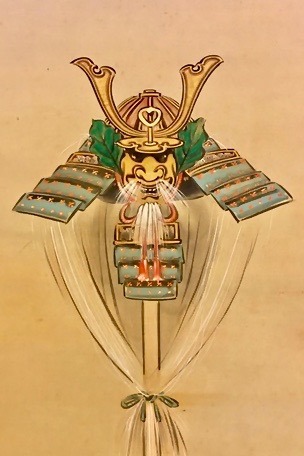
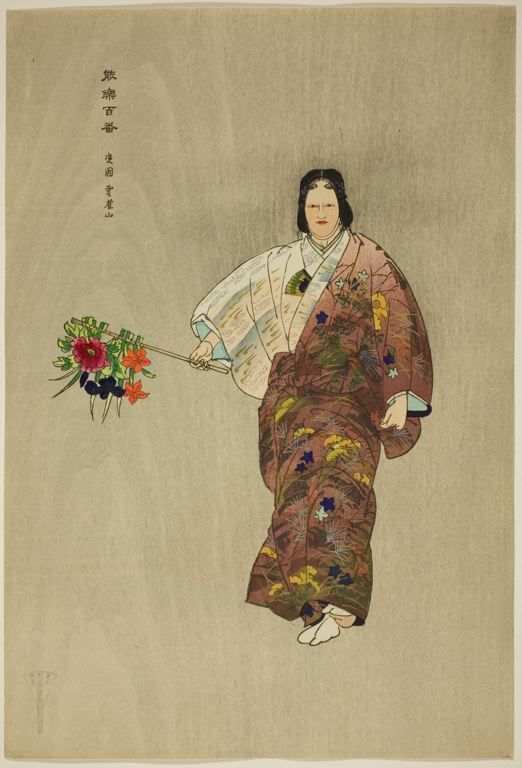

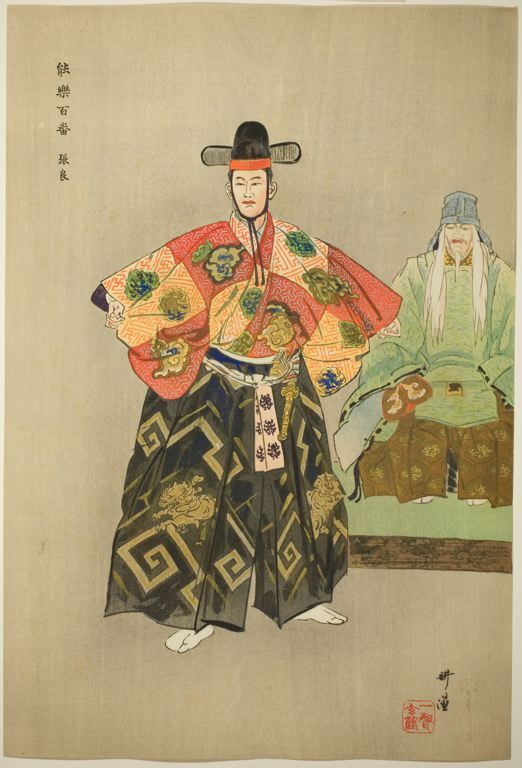


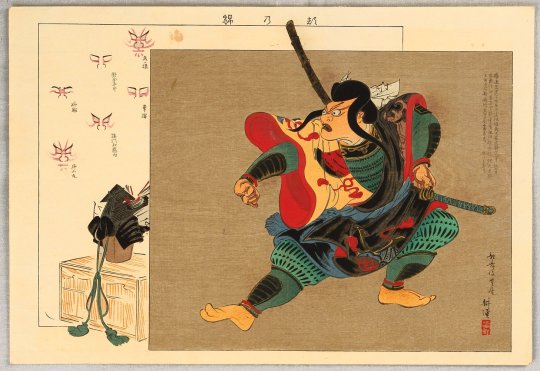
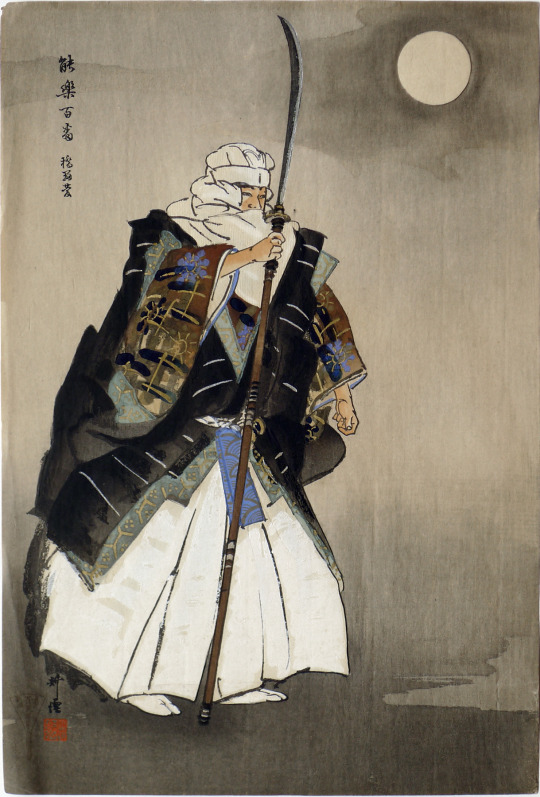
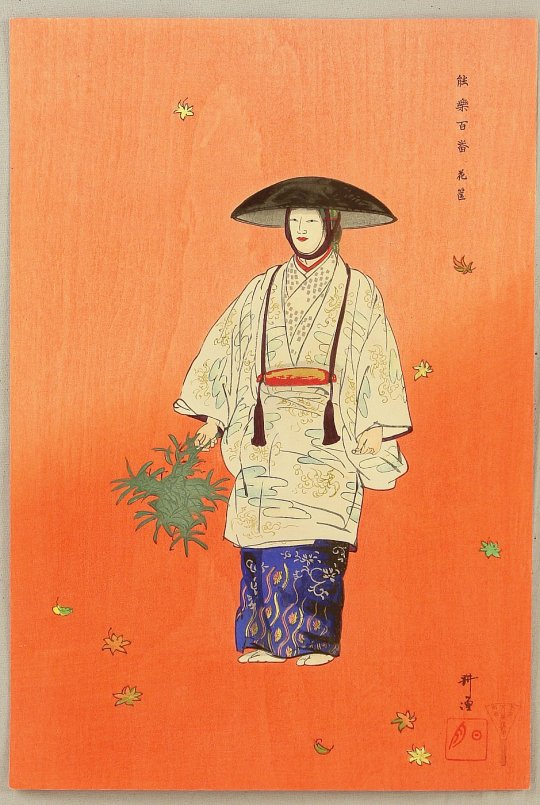
#Tsukioka Kōgyo (月岡 耕漁 18 April 1869 – 25 February 1927)#Noh#Kyogen#Japanese art#Japan#jadedinjapanworld
4 notes
·
View notes
Text
"Flowers of All Seasons" (a ca. 1960s-70s woodblock print) by Kasamatsu Shirō (笠松 紫浪; 1898-1991)
"Flowers of All Seasons" (a ca. 1960s-70s woodblock print) by Kasamatsu Shirō (笠松 紫浪; 1898-1991), a prominent member of both the shin-hanga (新版画, new prints) and, later, sōsaku-hanga (創作版画, creative prints) art movements in 20th century Japan.
This charming print presents six of Japan’s iconic seasonal flowers, notably excluding the most famous of them all, the cherry blossom (桜の花 sakura no hana).
The flowers shown, in order, are as follows:1) January & February - Plum Blossoms2) March & April - Camellia3) May & June - Iris 4) July & August - Morning Glory 5) September & October - Broad Bell-Flower6) November & December - Chrysanthemum
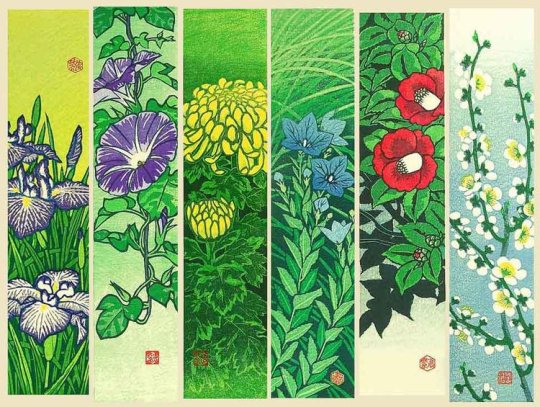
#Kasamatsu Shirō (笠松 紫浪; 1898-1991)#Flowers of All Seasons#Japanese woodblock#Japanese woodblock printmaking#Japanese art#shin-hanga (新版画)#sousaku-hanga (創作版画)#Japan#jadedinjapanworld
7 notes
·
View notes
Text
14 April, 1954
Born in Mototo, Kumamoto Prefecture Japan on this day in 1954, Tsuruta Ichiro (鶴田一郎) a contemporary Japanese artist who is celebrating his 67th birthday today.
He is most famous for his vivid paintings of beautiful Japanese women. - a genre of Japanese painting known as bijinga (美人画).
Here are some examples of his work.

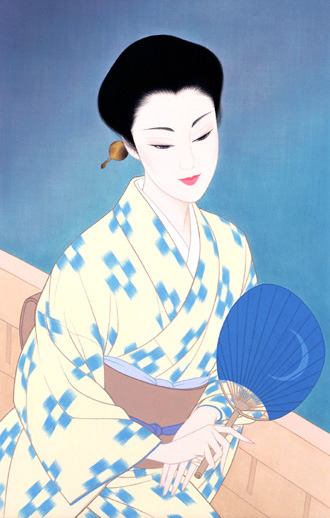
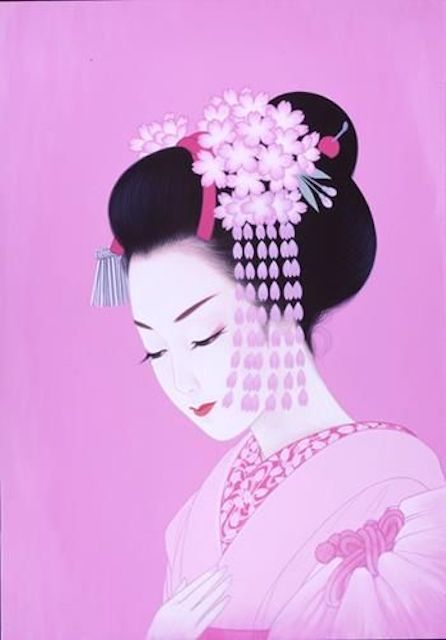


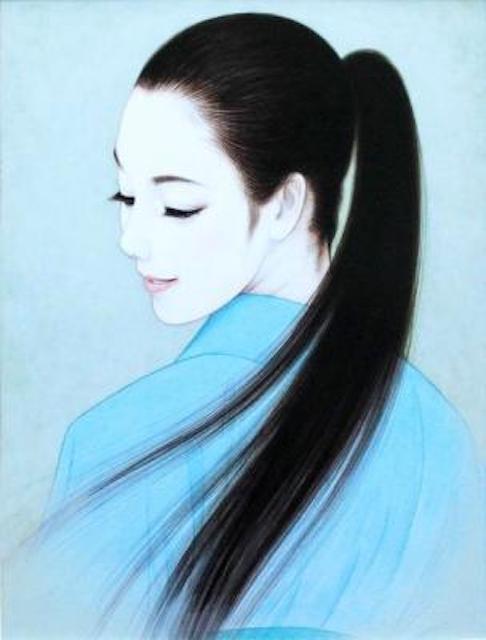
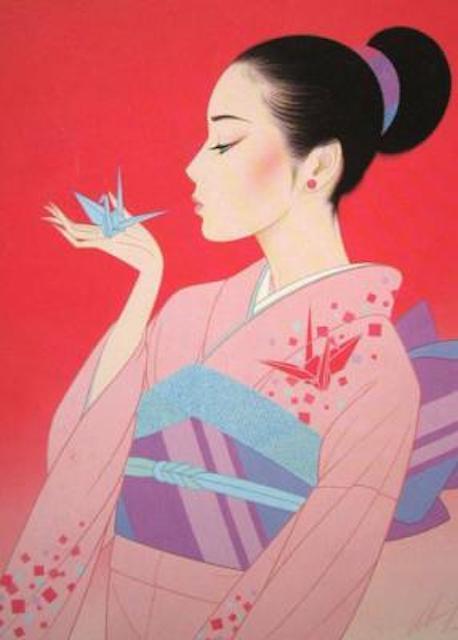
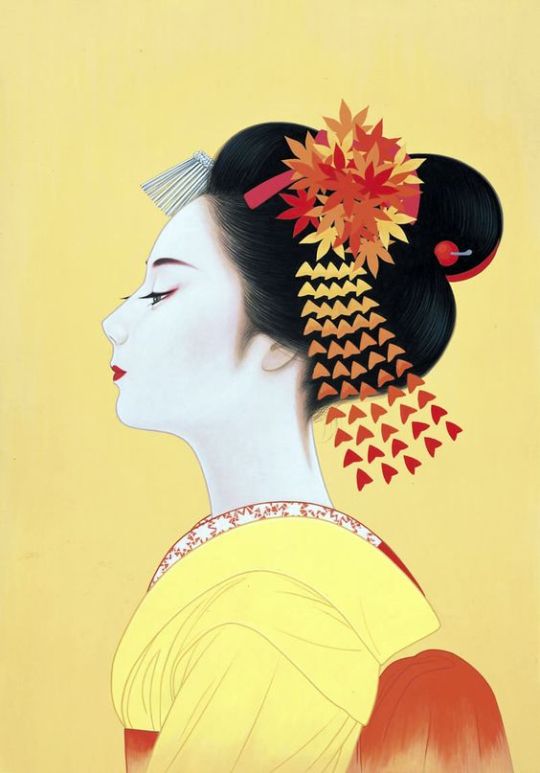
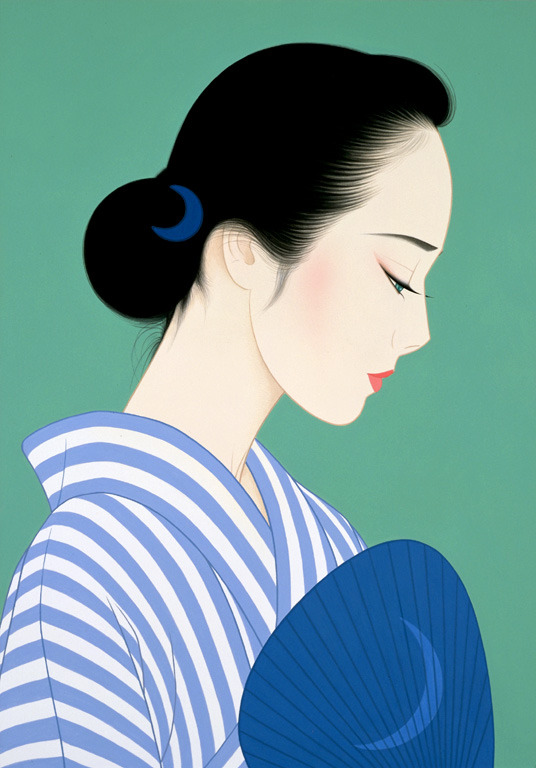
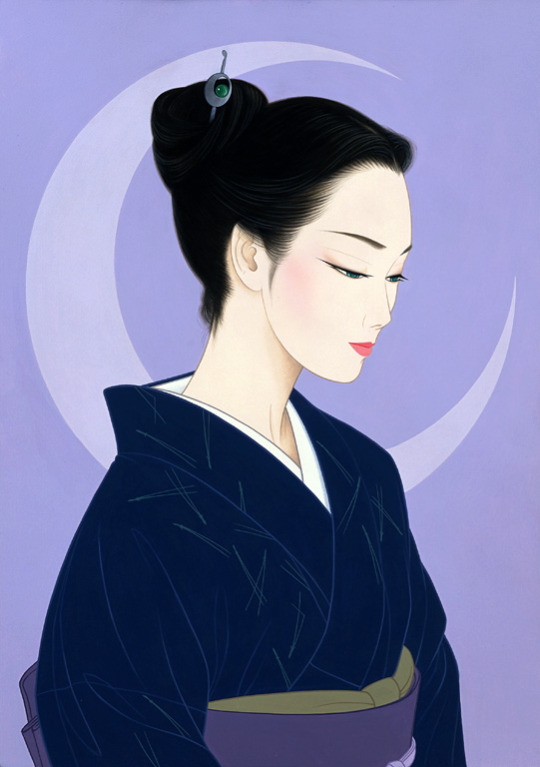

#Mototo#Kumamoto Prefecture#Japan#Japanese#Japanese painting#bijinga (美人画)#Tsuruta Ichiro#jadedinjapanworld
13 notes
·
View notes
Text
"Mt. Fuji, pine trees and chidori" (ca. 1900-1910) by Tsukioka Kōgyo (月岡 耕漁; 1869 – 1927) a.k.a. Sakamaki Kōgyo (坂巻 耕漁)
Tsukioka Kōgyo (月岡 耕漁; 1869 – 1927) a.k.a. Sakamaki Kōgyo (坂巻 耕漁) is more commonly known as the pre-eminent graphic artist of the nōh and kyōgen theatre traditions in the Meiji period.
Chidori, known in English as plovers, are a type of wading bird and very often featured in Japanese art, where a very common mythology suggests that they are born from the spume of waves (as any close examination of Hokusai's artwork will quickly reveal).
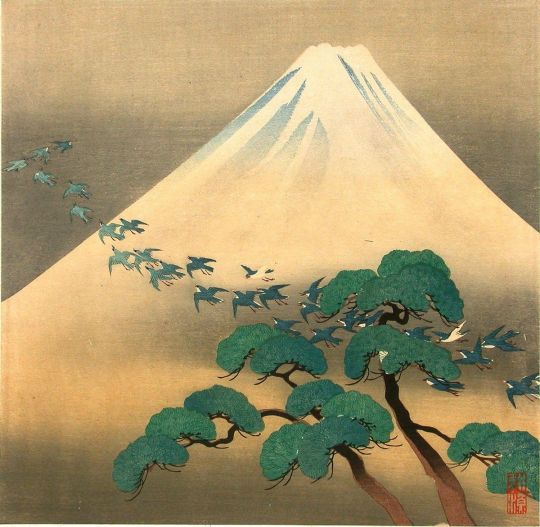
#Tsukioka Kōgyo (月岡 耕漁; 1869 – 1927) a.k.a. Sakamaki Kōgyo (坂巻 耕漁)#Mount Fuji (富士山)#pine trees#Chidori (Plovers)#Japan#Japanese art#meiji era painting#Meiji period (明治時代)#Noh#Kyogen#Katsushika Hokusai (葛飾北斎 1760-1849)#jadedinjapanworld
8 notes
·
View notes
Text
12 April, 1877
Founded on this day in 1877 one of Japan's most hallowed academic institutions, Tokyo University (東京大学), commonly referred to as Tōdai (東大). The university has many notable alumni, including seventeen Prime Ministers and three astronauts. Twelve alumni of the University of Tokyo have received the Nobel Prize or the Fields Medal. Three have received the Pritzker Architecture Prize.Here is a photo of Kato Hiroyuki (加藤弘之) in full regalia, who served as the first Dean of Tōdai!
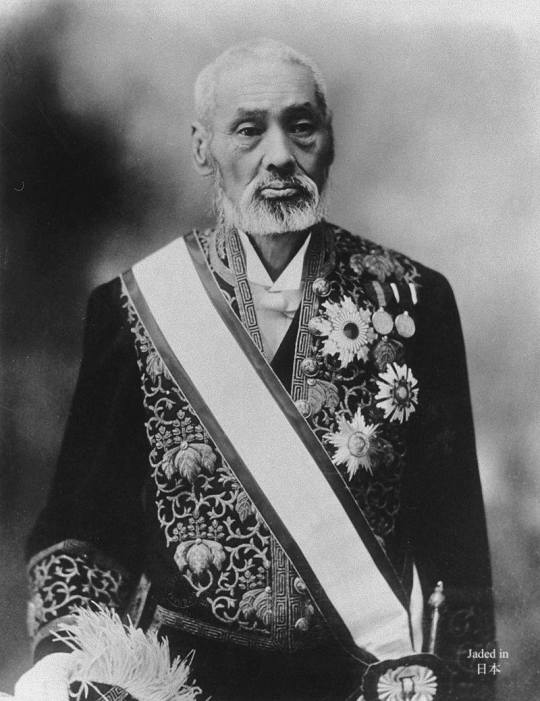
0 notes
Photo
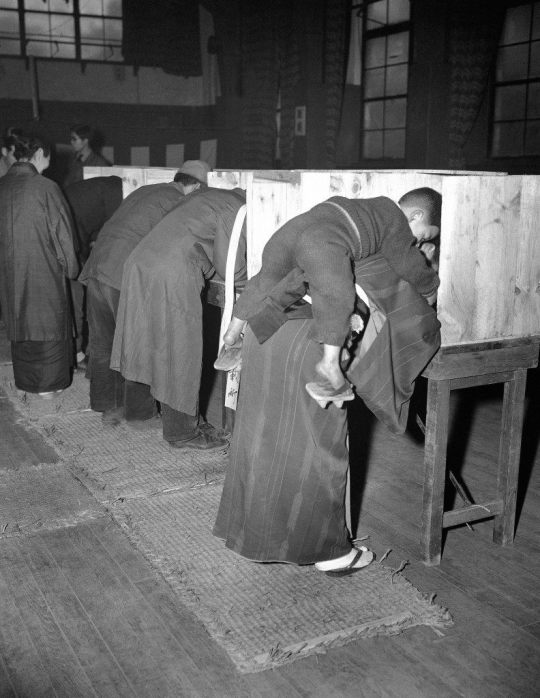
10 April 1946
A Japanese woman carries her son on her back as she marks her ballot in Tokyo on 10 April, 1946, in Japan at the first free election in generations. Japanese women also exercised the right to vote for the very first time during this election. AP photo
23 notes
·
View notes
Photo

Night cherry blossoms (夜桜, Yozakura)
#Night cherry blossoms (夜桜 Yozakura)#Tokyo#Japan#jadedinjapanworld#spring (春 haru)#nature#moon#moonlight
6 notes
·
View notes
Photo
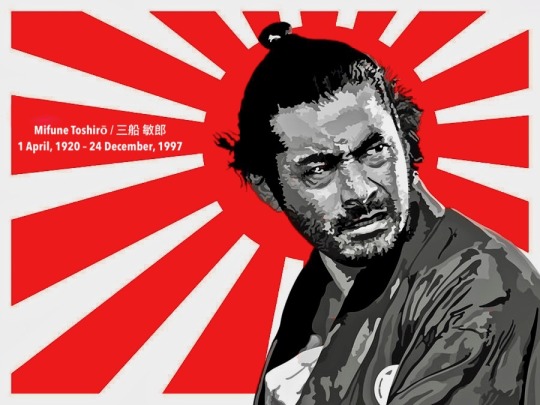
Mifune Toshirō (三船 敏郎, 1 April, 1920 – 24 December, 1997)
1 April, 1920
Born in Qingdao, Shandong, China, which was at the time still under Japanese occupation, on this day in 1920, acclaimed award-winning Japanese actor Mifune Toshirō (三船 敏郎, 1 April, 1920 – 24 December, 1997) who appeared in over 150 feature films during his long and prestigious career. https://youtu.be/_mZLNKqSYfI
He is best known for his 16-film collaboration (1948–1965) with world renowned Japanese filmmaker Kurosawa Akira (黒沢明, 1910-1998) in such works as:
1. "Drunken Angel" 醉いどれ天使 (1948) https://youtu.be/31LgTBuSIlc
2. "Stray Dog" 野良犬 (1949) https://youtu.be/HUmdSQiSxyQ
3. "Rashomon" 羅生門 (1950) https://youtu.be/Zqoyl2p8_lw
4. "Seven Samurai" 七人の侍 (1954) https://youtu.be/7mw6LyyoeGE
5. "Throne of Blood" 蜘蛛巣城 (1957) https://youtu.be/LY7ETIO1KB8
6. "The Hidden Fortress" 隠し砦の三悪人 (1958) https://youtu.be/0vLgROxvxN4
7. "Yōjimbo" 用心棒 (1961) https://youtu.be/y_1iT_GmHTE
8. "Sanjurō" 椿三十郎 (1962) https://youtu.be/Uq_rSsbhQnE
9. "High and Low" a.k.a. "Heaven and Hell" 天国と地獄 (1963) https://youtu.be/LV3z2Ytxu90
10. "Red Beard" 赤ひげ (1965) https://youtu.be/-i-I72-Fsqw
Among his other notable film roles, he also portrayed
1. Miyamoto Musashi in Hiroshi Inagaki's "Samurai Trilogy" (1954-56) and one earlier Inagaki film https://youtu.be/xuxLVv6pGZ4
2. Captain Tsuruhiko Kuroda (alongside Lee Marvin) in John Boorman's "Hell in the Pacific" (1968) https://youtu.be/SDfD8J_lJgo
3. Admiral Isoroku Yamamoto in three different films, including the 1976 production of (the Battle of) "Midway" https://youtu.be/FMrVTMRbtJg
4. Commander Akiro Mitamura in Steven Spielberg's "1941" (1979) https://youtu.be/6_KOLqpo7z8
5. Lord Toranaga in the NBC television miniseries "Shōgun" (1980) https://youtu.be/oY9fYXxmnU
Which of Mifune's many memorable films, if any, is your favourite one?
#Mifune Toshirō (三船 敏郎 1 April 1920 – 24 December 1997)#Japanese film actor#Kurosawa Akira (黒澤明; 23 March 1910 – 6 September 1998)#Japan#jadedinjapanworld
2 notes
·
View notes
Photo

"Cherry Blossom Moon" (桜月) by Shibata Koji
0 notes
Photo
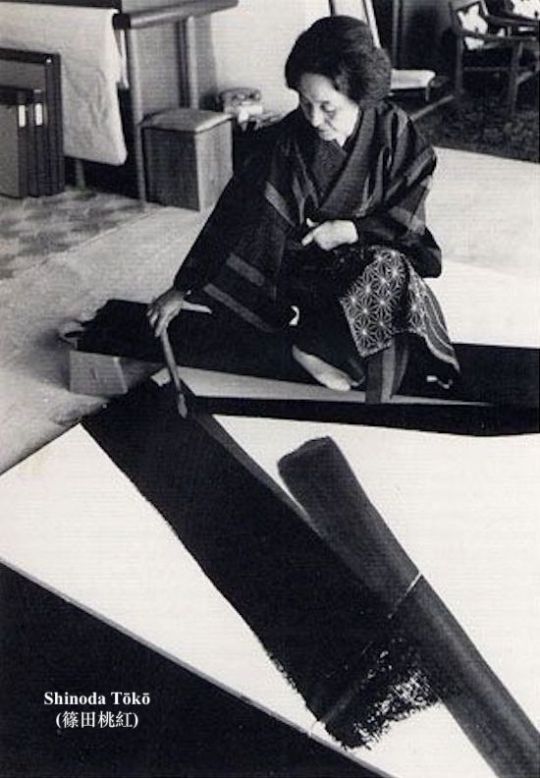

Japanese artist Shinoda Tōkō (篠田桃江)
28 March, 1913
Born on this day in Dalian, Manchuria, then a part of Japanese occupied China, Shinoda Tōkō (篠田桃江), a celebrated Japanese painter and calligrapher whose art merges traditional calligraphy with modern abstract expressionism. https://youtu.be/ryO6uknKch4
Classed as both "a Living National Treasure" and "an "intangible cultural asset", a 1983 interview in Time magazine asserted "her trail-blazing accomplishments are analogous to Picasso's." Today is her 108th birthday!
You can learn more about her life and career here: https://youtu.be/rQwyuvoEc4s
#Shinoda Tōkō (篠田桃江 born 1913)#Japanese art#Japan#jadedinjapanworld#Japanese painting#Caliigraphy#Living National Treasure#Abstract expressonism
4 notes
·
View notes